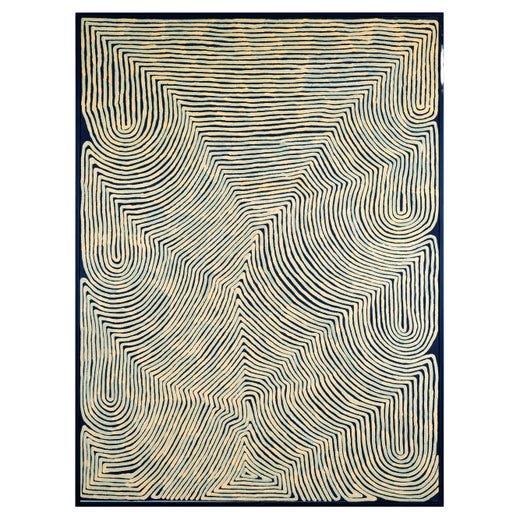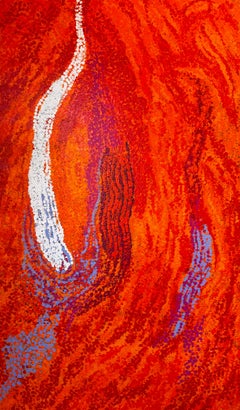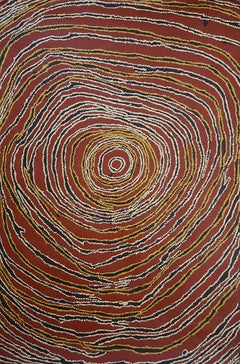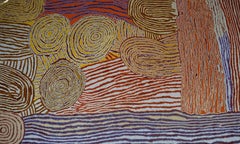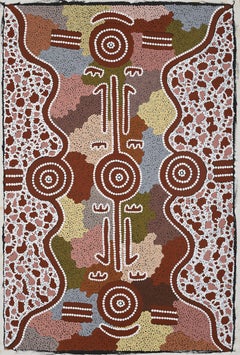Ronnie TjampitjinpaAboriginal Painting by Ronnie Tjampitjinpa2014
2014
About the Item
- Creator:Ronnie Tjampitjinpa (1942 - 2015, Aboriginal Australian)
- Creation Year:2014
- Dimensions:Height: 54.34 in (138 cm)Width: 38.59 in (98 cm)
- Medium:
- Movement & Style:
- Period:
- Condition:
- Gallery Location:Miami, FL
- Reference Number:1stDibs: LU13612991112
Ronnie Tjampitjinpa
Ronnie Tjampitjinpa was born around 1943 at Tjiturrunya in the region near Munyenga about 100 km west of the Kintore Ranges in Western Australia. Tjampitjinpa’s family traveled extensively across Pintupi territory, moving throughout this region and also in the area around Wilkinkarra, which straddles Western Australia to the Northern Territory border. Tjampitjinpa was initiated into Aboriginal Law at Yumari, near his birthplace. After prolonged droughts in the 1950s, he moved with his family, first to Haasts Bluff, then to Papunya. Over the years, moving between Aboriginal communities stations, Tjampitjinpa talked to many people about returning to traditional lands, a move that was made possible with the establishment of Kintore in 1981. Tjampitjinpa moved there with his family in the early 1980s and has since emerged as one of Papunya Tula Artists' major painters.
You May Also Like
21st Century and Contemporary Contemporary Abstract Paintings
Linen, Ink, Spray Paint, Acrylic
2010s Contemporary Abstract Paintings
Acrylic, Linen
2010s Contemporary Landscape Paintings
Textile, Linen, Yarn, Acrylic
2010s Contemporary Landscape Paintings
Textile, Linen, Yarn, Acrylic
2010s Contemporary Abstract Paintings
Acrylic, Linen
2010s Contemporary Abstract Paintings
Linen, Acrylic
2010s Contemporary Abstract Paintings
Acrylic, Linen
2010s Contemporary Abstract Paintings
Linen, Acrylic
2010s Contemporary Abstract Paintings
Linen, Acrylic
2010s Contemporary Abstract Paintings
Linen, Acrylic
More From This Seller
View All2010s Contemporary Abstract Paintings
Linen, Cotton Canvas, Acrylic
2010s Contemporary Abstract Paintings
Linen, Cotton Canvas, Acrylic
2010s Contemporary Abstract Paintings
Linen, Cotton Canvas, Acrylic
2010s Contemporary Abstract Paintings
Linen, Acrylic
2010s Contemporary Abstract Paintings
Cotton Canvas, Acrylic, Linen
20th Century Contemporary Figurative Paintings
Acrylic, Canvas, Mixed Media
